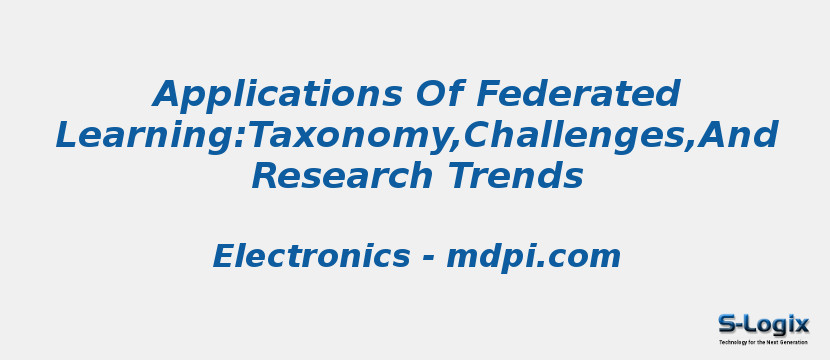Research Area: Machine Learning
The federated learning technique (FL) supports the collaborative training of machine learning and deep learning models for edge network optimization. Although a complex edge network with heterogeneous devices having different constraints can affect its performance, this leads to a problem in this area. Therefore, some research can be seen to design new frameworks and approaches to improve federated learning processes. The purpose of this study is to provide an overview of the FL technique and its applicability in different domains. The key focus of the paper is to produce a systematic literature review of recent research studies that clearly describes the adoption of FL in edge networks. The search procedure was performed from April 2020 to May 2021 with a total initial number of papers being 7546 published in the duration of 2016 to 2020. The systematic literature synthesizes and compares the algorithms, models, and frameworks of federated learning. Additionally, we have presented the scope of FL applications in different industries and domains. It has been revealed after careful investigation of studies that 25% of the studies used FL in IoT and edge-based applications and 30% of studies implement the FL concept in the health industry, 10% for NLP, 10% for autonomous vehicles, 10% for mobile services, 10% for recommender systems, and 5% for FinTech. A taxonomy is also proposed on implementing FL for edge networks in different domains. Moreover, another novelty of this paper is that datasets used for the implementation of FL are discussed in detail to provide the researchers an overview of the distributed datasets, which can be used for employing FL techniques. Lastly, this study discusses the current challenges of implementing the FL technique. We have found that the areas of medical AI, IoT, edge systems, and the autonomous industry can adapt the FL in many of its sub-domains; however, the challenges these domains can encounter are statistical heterogeneity, system heterogeneity, data imbalance, resource allocation, and privacy.
Keywords:
Federated Learning
Deep Learning
Machine Learning
Author(s) Name: Momina Shaheen, Muhammad Shoaib Farooq,Tariq Umer and Byung-Seo Kim
Journal name: Electronics
Conferrence name:
Publisher name: MDPI
DOI: https://doi.org/10.3390/electronics11040670
Volume Information: Volume 11 Issue 4
Paper Link: https://www.mdpi.com/2079-9292/11/4/670/htm
